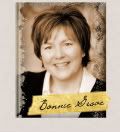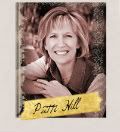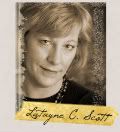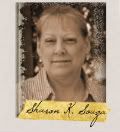 In 2006, when asked about a popular novel, Madeleine L'engle told Newsweek, "It's a nice story but there's nothing underneath it. I don't want to be bothered with stuff where there's nothing underneath."
In 2006, when asked about a popular novel, Madeleine L'engle told Newsweek, "It's a nice story but there's nothing underneath it. I don't want to be bothered with stuff where there's nothing underneath."We've talked about those wonderful tales that "draw you in with language, imagery, character insight and a sense of place." I'd like to add to the list that "something underneath," that quality of layered meanings.
Bonnie and I talked about this on our way home from the conference at Mount Hermon, and I was surprised to discover the layers were one thing to me and something very different, something I'd never considered, to her. Since I clearly have much to learn, I'll start off by explaining my take on the subject, then let the other ladies chime in.
In The Feast of Saint Bertie, my main character observes that the pomegranate has historically been used to symbolize both life and death. That symbol plays into the things Bertie learns along her journey.
I love novels that entertain and enrich on the level of story, but that reward with deeper meaning that reader who lingers over the nuances and symbols planted within the narrative. Even if the reader doesn't linger,
these elements still work an unarticulated magic over the story by lending it an ambiance that corresponds to the spiritual dimension we feel in our own lives even if we can't explain it. A friend quoted a lady preacher she heard once, who said, "It ain't what's goin' on, honey. It's what's really goin on."
 I remember that conversation, Katy. And it was amazing to learn how you viewed the various layers of a novel compared to how I saw things. I love learning from colleagues! We both agree that great novels are complex things - layered with meaning, intent, subtext, and, of course, story.
I remember that conversation, Katy. And it was amazing to learn how you viewed the various layers of a novel compared to how I saw things. I love learning from colleagues! We both agree that great novels are complex things - layered with meaning, intent, subtext, and, of course, story.
 I remember that conversation, Katy. And it was amazing to learn how you viewed the various layers of a novel compared to how I saw things. I love learning from colleagues! We both agree that great novels are complex things - layered with meaning, intent, subtext, and, of course, story.
I remember that conversation, Katy. And it was amazing to learn how you viewed the various layers of a novel compared to how I saw things. I love learning from colleagues! We both agree that great novels are complex things - layered with meaning, intent, subtext, and, of course, story.For me layers happen on at least three levels. First is the story level. This level gets all the benefit of the story and its meaning –and often much of the subtext. It's the polish of the book, the finished face that looks so good.
The second level explores the social issues the book focuses on as well as secondary issues that are mentioned and explored through sub-plot, or by some other means. It provides the context and "meat" of the book. This is the book club level – where the discussions go deeper and are often applied to the reader’s life or experience.
Third is the literary level – This is the writers tool box at work - Voice, subtext, characterization, and how she breaks the rules, or simply makes up rules to best suit her story. This is where you'll discover symbols and over arching metaphors. It is how the author used sensory details to draw the reader into the story or how he used the smaller, focused story to talk about a much larger issue. This is the engine of the book –created to be felt rather than noticed.
Third is the literary level – This is the writers tool box at work - Voice, subtext, characterization, and how she breaks the rules, or simply makes up rules to best suit her story. This is where you'll discover symbols and over arching metaphors. It is how the author used sensory details to draw the reader into the story or how he used the smaller, focused story to talk about a much larger issue. This is the engine of the book –created to be felt rather than noticed.
All these layers (and their many strategies) work together to tell, as Katy's friend's pastor said, "What is really goin' on."
I admit I feel lost in these discussions at times. I'm not sure I could hold my own in a conversation about subtext, nuances, symbols, over-arching metaphors, etc. But I know when they're there, and I know when they're not.
Cotton candy was always a disappointing treat when I was a kid. It looked so good on the outside, but when it got right down to it there was nothing to chew on. That's what a book without all the layers of meaning you're talking about is like -- just so many words without the stuff that satisfies.
That's what I love about all of your books: the care you take with the stories you craft, that leads to the satisfaction I get when I read a passage where you've used just the right word in the place of any number of words that would have sufficed, but would not have sung.
I have a growing list of novels that touch me in deep places, that incorporate the elements, as Katy so beautifully stated, that work an unarticulated magic over the story. Please leave a comment and share a title or two from your list of favorite books.
 Okay, from now on, we drive together! I wish I'd been a part of that conversation. Although, truthfully, I would have been nodding my head in simpleton assent from the luggage department.
Okay, from now on, we drive together! I wish I'd been a part of that conversation. Although, truthfully, I would have been nodding my head in simpleton assent from the luggage department.The books that layer meaning in a satisfying way, do so seamlessly. I'm rarely aware of the craft the author expended until I put the book down and immediately want to pick it back up again. My metaphor for a deeply satisfying read is a pan of brownies. I can't resist going back for another corner! (Love the crunchy edges!) I flip through the pages, looking for the secret.
I have to agree with Bonnie's notion of layering with only minor differences, mostly semantics. The story evolves out of the characters. Who are they and what's the worst possible thing that could happen to them? Answering those questions, along with focusing on their motivations and desires, builds the story, so I have to know my characters well. And the least like me they are, the more fun they are to play with every day.
Settings are characters in my stories, and this parallels Bonnie's social layer. In my first novels, creating beauty in a barren wasteland mirrored the main character's motivation to bear fruit in her pain. The setting for The Queen of Sleepy Eye was a cauldron of conflicting needs on which my character discovers grace, just like we must in our world. Indeed, this is where the book clubs dance, Bonnie.
And I so agree with Bonnie's take on the literary toolbox. Only, for me, knowing when to choose fine-grain sandpaper when I'm tempted to pull out the hammer is my area of growth these days. Craft must propel story, not be so conspicuous that story in buried.
And as Sharon encouraged, please let us know fine examples of layered meaning in novels. I desperately need to add to my TBR pile. Ha!
 I racked my brain to try to come up with an example of a book with the aforementioned layers of meaning and I thought of many books (such as The Great Gatsby) that I've already mentioned before. But the one book whose layers of meaning keep unfolding for me is the Bible. I read, for instance, the Song of Solomon when I was a teenager and understood very well what it meant to be faint with love; but not until I was married did I understand "I have taken off my robe--must I put it on again? I have washed my feet -- must I soil them again?" --and then the despair in finding the opened door, the vacant threshold.
I racked my brain to try to come up with an example of a book with the aforementioned layers of meaning and I thought of many books (such as The Great Gatsby) that I've already mentioned before. But the one book whose layers of meaning keep unfolding for me is the Bible. I read, for instance, the Song of Solomon when I was a teenager and understood very well what it meant to be faint with love; but not until I was married did I understand "I have taken off my robe--must I put it on again? I have washed my feet -- must I soil them again?" --and then the despair in finding the opened door, the vacant threshold.
 I racked my brain to try to come up with an example of a book with the aforementioned layers of meaning and I thought of many books (such as The Great Gatsby) that I've already mentioned before. But the one book whose layers of meaning keep unfolding for me is the Bible. I read, for instance, the Song of Solomon when I was a teenager and understood very well what it meant to be faint with love; but not until I was married did I understand "I have taken off my robe--must I put it on again? I have washed my feet -- must I soil them again?" --and then the despair in finding the opened door, the vacant threshold.
I racked my brain to try to come up with an example of a book with the aforementioned layers of meaning and I thought of many books (such as The Great Gatsby) that I've already mentioned before. But the one book whose layers of meaning keep unfolding for me is the Bible. I read, for instance, the Song of Solomon when I was a teenager and understood very well what it meant to be faint with love; but not until I was married did I understand "I have taken off my robe--must I put it on again? I have washed my feet -- must I soil them again?" --and then the despair in finding the opened door, the vacant threshold. I don't think it is just the age at which I read it nor my own stage of life. I believe the Bible is unlike any other book ever written, with constantly-budding, ever-new blooming, bough-heavy fruit-laden treasures each time I open its pages.
I still gasp when I read it.













6 comments:
Sharon, Bonnie and I actually had that conversation at your kitchen table (which was on our way home, right?), so you might have been in the shower or something.
Patti, I love what you said about choosing the correct tool. A writer must continue to hone her skills (practice the tools of the trade) and master an increasing number of tools in order to grow as a writer.
If the only tool a person possesses is a hammer, then everything looks like a nail.
How conscious of these layers are you when you write? IT sounds like it has to be awfully hard to put all these elements into a story. Do you write it in "one" sitting, getting most of it in on the first draft, or do you graze over the manuscript multiple times adding things in each time? So, how many months would it take to write a novel, doing it full time? It sounds a bit unrealistic to write something like that in short order... I know I am a reader when I read a discussion like this!!!
word verification - logiv: The sequel to the movie Log 3
ooh, one of my favorite things that really makes a novel enjoyable for me: That little thing that later saves the day.
You know, that thing that the author painstakingly mentions so softly that you barely notice it, but a hundred or so pages later, it saves everyone! I love looking for those while I read, and they're really fun to plant in my own writing.
I met for lunch with another author today (wonderful woman) and we discussed our childhood favourites and why, after reading Lewis and Tolkien, the other fantasies we read seemed so superficial.
Both Lewis and Tolkien went well beyond the external actions of the stories. The characters wrestle with their own shortcomings, sometimes failing, deal with doubt and faith, rework their definition of success to encompass things much bigger than their own survival or even the survival of their loved ones. They speak to yearnings even deeper than the desire for happiness and love. And this, I think, is what made them so great. And what the moviemakers SO did not get.
Steve, I think a lot of this is subconscious for a writer. The theme of a book will often emerge from the story without the author looking for it, as a natural function of what is in their hearts. For instance, a recurring them in the Harry Potter books is the value of marginalized people, the hidden riches in people that are looked down on by others. This is obviously something that matters a great deal to Rowling, because it's a motif that occurs over and over again, although it rarely draws attention to itself. She just couldn't help writing about it, I suspect.
I'm also sure some conscious crafting goes into this, but I don't believe the stuff "underneath" can be injected in subsequent rewrites. It holds everything else up. It can be revealed better perhaps in a rewrite, but if it isn't an integral part of the story, it's superficial by definition, a decoration tacked on at the last minute and just as easily removed. It might perhaps catch the eye, but it won't move the heart.
In other words, if it doesn't flow naturally from the heart of the author, it won't really work.
Inuit carvers take a piece of soapstone in their hands and whisper to it, "Who is in there?" Michelangelo said that making a statue was easy, you just took away the extra until the statue was left. I think themes emerge when you trim away the fluff and let the bones of the story show through.
Great discussion. Layers of meaning is definately something that keeps me reading and enjoying a novel. How to write it is harder to figure out...
Post a Comment